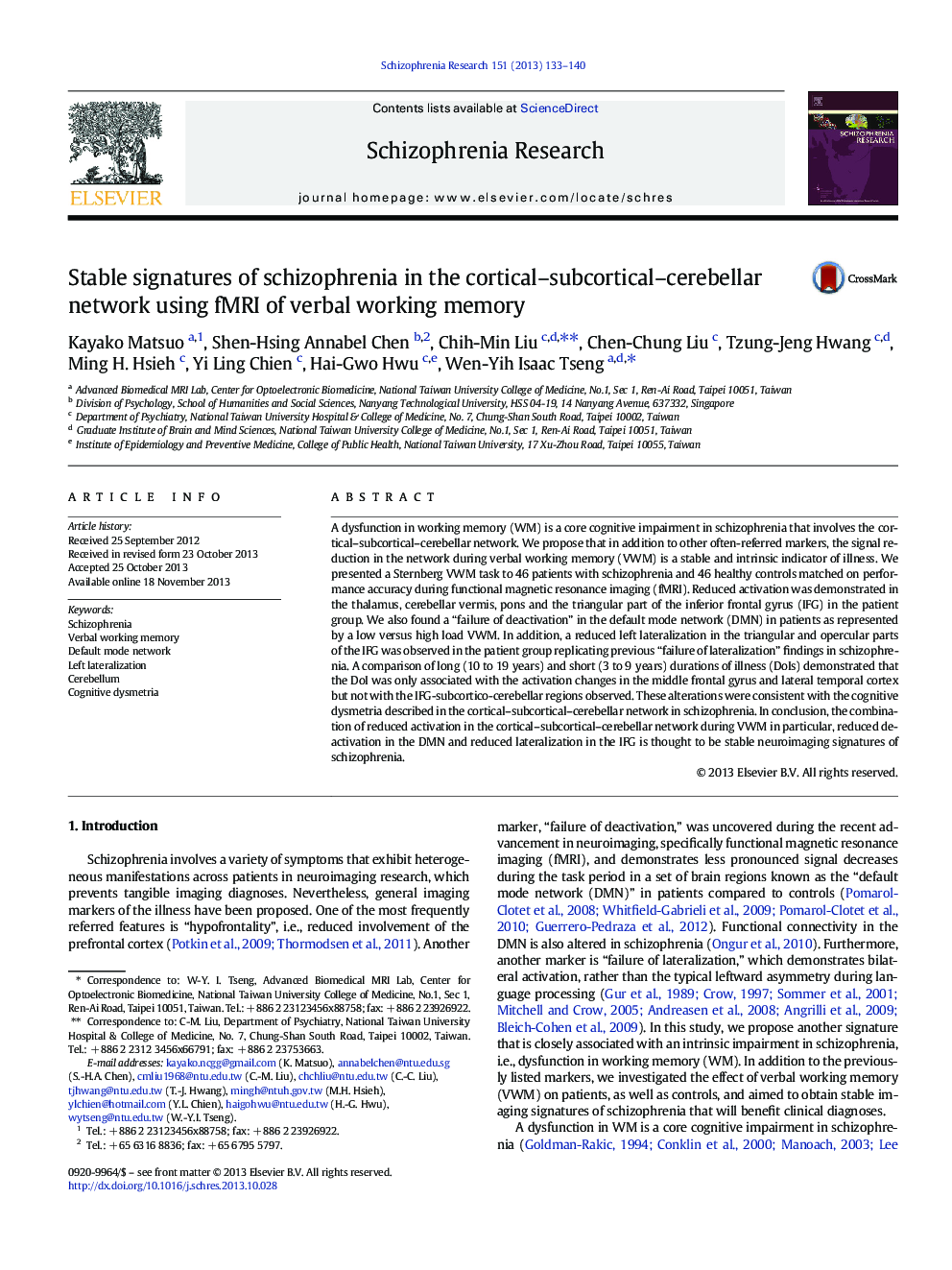| Article ID | Journal | Published Year | Pages | File Type |
|---|---|---|---|---|
| 341193 | Schizophrenia Research | 2013 | 8 Pages |
A dysfunction in working memory (WM) is a core cognitive impairment in schizophrenia that involves the cortical–subcortical–cerebellar network. We propose that in addition to other often-referred markers, the signal reduction in the network during verbal working memory (VWM) is a stable and intrinsic indicator of illness. We presented a Sternberg VWM task to 46 patients with schizophrenia and 46 healthy controls matched on performance accuracy during functional magnetic resonance imaging (fMRI). Reduced activation was demonstrated in the thalamus, cerebellar vermis, pons and the triangular part of the inferior frontal gyrus (IFG) in the patient group. We also found a “failure of deactivation” in the default mode network (DMN) in patients as represented by a low versus high load VWM. In addition, a reduced left lateralization in the triangular and opercular parts of the IFG was observed in the patient group replicating previous “failure of lateralization” findings in schizophrenia. A comparison of long (10 to 19 years) and short (3 to 9 years) durations of illness (DoIs) demonstrated that the DoI was only associated with the activation changes in the middle frontal gyrus and lateral temporal cortex but not with the IFG-subcortico-cerebellar regions observed. These alterations were consistent with the cognitive dysmetria described in the cortical–subcortical–cerebellar network in schizophrenia. In conclusion, the combination of reduced activation in the cortical–subcortical–cerebellar network during VWM in particular, reduced deactivation in the DMN and reduced lateralization in the IFG is thought to be stable neuroimaging signatures of schizophrenia.
